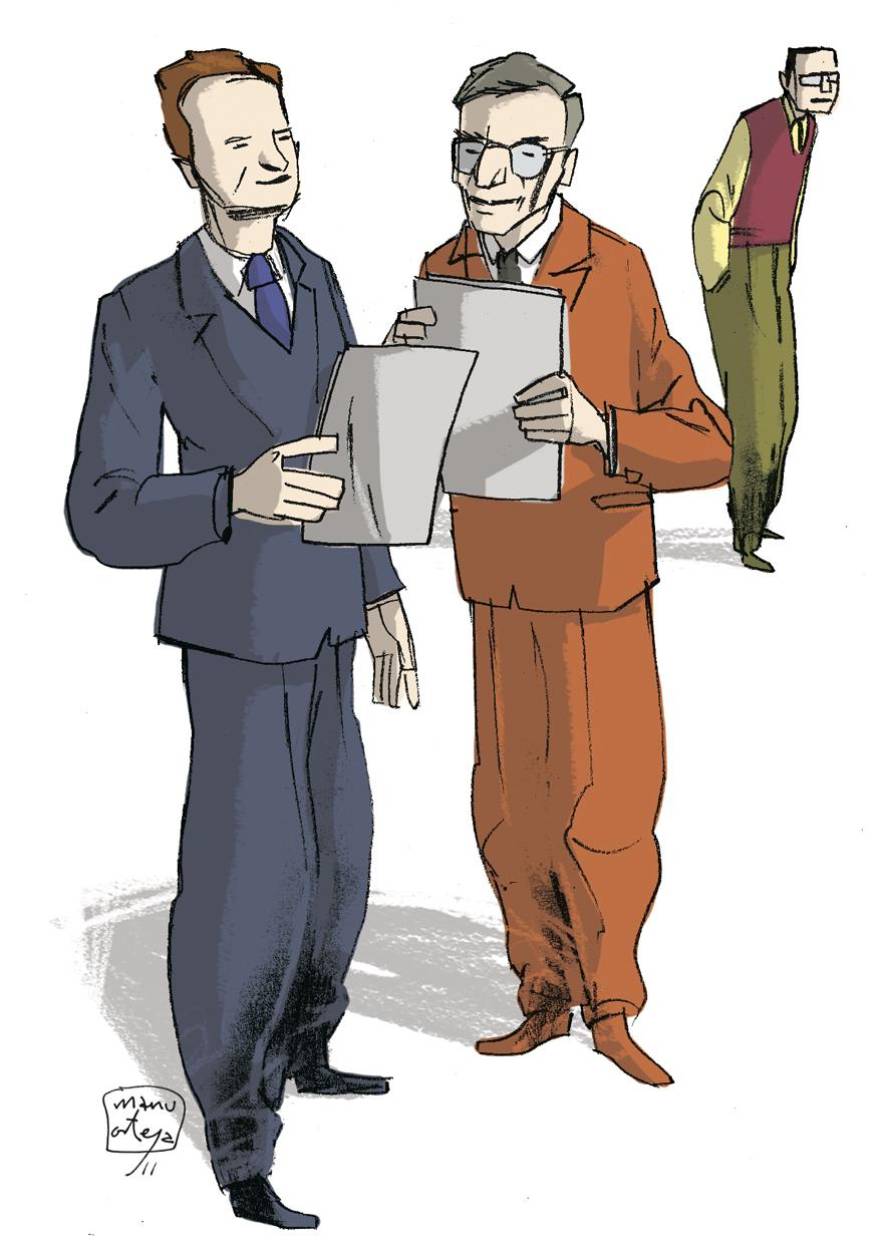Big Bang Alphabet
Alpher, Bethe, Gamow. Those surnames that looked like the first letters of the Greek alphabet. A perfect signature for a scientific article on the origin of the universe. Therefore, when the time came to publish the research carried out by the young Ralph Alpher in his thesis, his director, George Gamow, proposed to his friend Hans Bethe the signature of the work. Thus was published the article "Alpher-Bethe-Gamow".
The young Alpher was not very gracious to the idea of his thesis director. At that time, both Gamow and Bethe were great names and feared that their own shadow, that of the true author of the work, would remain in their shadow.
The title of the article was "The Origin of Chemical Elements" and offered results that strengthened the Big Bang theory. It was the 1940s and few took into account the theory proposed by the Belgian priest Georges Lemaître in 1931. Lemaître did not use the expression "Big Bang", but proposed that it was a "day without yesterday" and that the universe arose from the explosion of a "primitive atom" or "cosmic egg".
Unlike most of the physicists of his time, Alpher and Gamow were convinced that that theory made sense and wanted to find some proof in their favor. To do this, they wanted to see if the differences in the abundance of elements of the universe could be explained with the Big Bang. Alpher spent months doing nuclear calculations. Alpher's calculations suggested that the universe resulting from a hypothetical Big Bang would be composed primarily of hydrogen and helium, and that there would be 10 hydrogen atoms per helium atom. And that was precisely the proportion measured by astronomers in stars and galaxies.
Alpher first presented this data in defence of his thesis in the spring of 1948. The rumor that a 27-year-old gave a big step forward and the auditorium was filled. The journalists were also present, being the headline of the Washington Post the next day "The world began in five minutes."
Then they published the article "Alpher-Bethe-Gamow" and Alpher's fears came true: The scientific community considered it a work of great physicists like Bethe and Gamow, and Alpher remained in the shade.
Months later he published with Robert Herman another work in which they concluded that the radiation emitted by the Big Bang is still in the present universe as radio waves. They asked astronomers to look for the echo of the Big Bang. But in this case Alpher was not lucky either, no one paid any attention to them.
On the one hand, most astronomers were not convinced of the Big Bang concept, and supporters of the theory also considered it technically impossible to detect that radiation. "We gave conferences with a lot of energy. No one grabbed the hook; no one said that could be measured," Alpher complained later.
A decade later, when the contribution of Alpher and Herman was already forgotten, astrophysicists Robert Dicke, Jim Peebles and David Wilkinson of Princeton University reached the same conclusion: The echo of the Big Bang had to be there. In addition, they believed that it could be detected with the proper tool and prepared for it.
Meanwhile, 60 km later, at Bell Laboratories in New Jersey, young radio astronomers Arno Penzias and Robert Wilson could not imagine how to get rid of the echo of the Big Bang. They were conducting sessions to use a large communication antenna. This antenna was built for satellite communication, for which they should remove all interference. However, despite having taken all the measures for this, they received a continuous background noise.
For a year they did everything that occurred to them to eliminate it. They tested all electrical systems, built new tools, inspected the circuits, moved the cables, removed dust from the plugs... It was raised to the antenna and an adhesive tape was placed on all joints and rivets, and on the antenna nidifying doves were hit, due to the "white dielectric material" that was on the surface of the antenna. It was also cleaned, but when they did what they did, the noise was still there. It came everywhere, night and day.
Thus Penzias and Wilson worked until in 1965 they knew the conclusions of the Princeton researchers. Then they began to realize what that noise was. It corresponded entirely with the radiation announced by Princetongo (and Alpher and Herman). It was the radiation of the creation of the universe.
Penzias and Wilson immediately published this great discovery. The article did not refer to the announcement of Alpher and Herman. The anger that Alpher lived at that time he would later recognize: "I was offended that I had not even been invited to see that damn antenna." And he wrote with Herman in his book Genesis of the Big Bang, where he says: "One does science for two reasons: for the emotion of measuring or understanding something for the first time and, once achieved, for the recognition of its members at least."
This recognition came from the hand of Penzias in 1978. He praised the contributions of Gamow, Herman and Alpher when he received the Nobel Prize. Wilson and both were given the Physics Novel, which they did not look for and when they discovered it they did not know for "discovering cosmic microwave background radiation".






